Dispute Resolution under GST- Problems and Challenges with Special Focus on Appellate Remedies
Table of Authorities
Statutes
- Central Excise Act 1944
- Central Goods and Services Act 2017
- The Finance Act 1994
- The Constitution of India 1950
Cases
- Bhartiya Vitta Salahkar Samiti v. UOI WP(C) No. 6900/2018 & 3247/2018
- Jai Baba Amaranth Industries v. State of U.P. [2018] 96 taxmann.com 325/15 GSTL 484
- Revenue Bar Association v. Union of India WP No. 21147, 21148 and 14919 of 2018
- UAE Exchange Ltd. v. UOI 236 ELT 223
- Union of India v. R Gandhi [2010] 11 SCC 1
Introduction
The reasons for bringing the GST regime to the tax structure in the country were to rationalize the indirect tax regime of the country to inhibit the “cascading effect” of tax and create a common market for goods and services in the country.[1] The government pitched ease of doing business, investor friendliness and economic growth as the necessary underpinnings for this under the “one nation-one tax” vision.[2] In this era of globalization and international trade and export orientated development, it is a welcome change. In 2018 India jumped to the 77th position in the World Bank’s ease of doing business index which has further improved and a big part of the credit for this goes to the introduction of the GST regime among others like the IBC, FDI policy etc.[3] All of this sounds very good on paper but the real test of any reform is its on ground effectiveness in practice. The government’s grand vision cannot be realized without a robust dispute settlement system which caters to efficiency in disposal of disputes while keeping litigation costs low. The GST regime has introduced a thorough and extensive framework related to the various kinds of disputes that may arise out of the entire GST regime. These include disputes arising between the centre and state(s) or between centre and state(s) on one side and other states on the other side or between one or more states.[4] The other most important kind of disputes is the grassroots level disputes or “taxman-assessee” disputes arising from issues related to payment of taxes by persons and levy by the authorities.[5] The focus of this paper is the second kind of disputes i.e. grassroots disputes. Although the various issues regarding litigation in general in India are also applicable to tax disputes but tax disputes are also unique in other ways which makes tax dispute settlement even trickier. Firstly, the technical nature of facts as well as law in tax matters makes them especially complex, secondly, the initial adjudication by issuer of notice which is an official of the department or his senior carries an inherent suspicion of bias and thus such matters mostly get appealed leading to a lot of matters continuing.[6] Thus it becomes all the more crucial to have a good system of dispute settlement.
Keeping this in mind this paper shall firstly discuss the regime established for dispute resolution under the GST regime and what are its salient features and implications. This will include an in depth discussion of the provisions relating to dispute resolution. Thereafter, the paper will go on to discuss certain issues that have arisen regarding this especially with regard to the framework for appellate remedies and analyze them in detail to understand how they can be tackled.
Dispute Resolution under the GST Regime
The GST Council has been empowered to make a mechanism dealing with the first kind of disputes (i.e. centre-state, state-state etc) under the constitution of India itself.[7] The second kind of disputes are not mentioned in the purview of the GST Council explicitly under the constitution but the Parliament and state legislatures have the power to deal with such disputes by virtue of provisions like the Art. 323B[8] to appropriate matters under the center or states’ powers and provisions under the CGST Act and respective GST acts of states and union territories.
Tax disputes can arise due to various probable causes such as disputes arising after assessment and scrutiny, place of supply, composite and mixed supply, classification of goods and services, wrongful claim of input tax credit etc.[9] Various provisions in the central and state GST acts provide various officers to be authorities that can adjudicate on matters involving issues like the ones mentioned above and pass orders for demand and recovery of amounts.
Adjudicating Authorities
An “adjudicating authority” has been defined under the CGST Act as any authority which has the capability to pass an order or decision under the act except the CBIC, the Revisional and Appellate authority, the authority and appellate authority for advance rulings, appellate tribunal and anti-profiteering authority.[10] Section 73 and 74 for instance deal with situations any tax has not been paid or partly paid or wrongfully refunded or input tax credit has been wrongly used.[11] The main difference between the two sections is that the latter applies when these conditions occur due to fraud or voluntary misstatement or suppression of facts for the purpose of evasion while the former deals with any other situations apart from these. The sections provide the power of issuing show cause notice to the assessee and after hearing the assessee the authority has the power to pass and order for paying the requisite amount. The act also gives authority to the proper officer to pass an order in case of a person who has collected tax from another person but has not paid it to the government after giving a show cause notice and hearing the person.[12] These powers to issue orders form the bedrock of adjudication in the act and are subject to appeals according to the appellate framework given under the act.
Appellate Authority
The CGST Act provides that any order of an “adjudicating authority” passed under the central act or any of the state or union territory acts can be appealed before an authority designated as the appellate authority.[13] The time limit for appeals advanced by individuals is prescribed as three months from the date of communication of the impugned order and for appeals by the Revenue is prescribed as six months from the date of communication of the order.[14] The act prescribes a timeline of ideally one year to settle the appeal but does not make it mandatory and any stay put by a court or the tribunal can be deducted from the time taken to dispose the appeal.[15] The appellate authority has wide powers when it comes to altering the impugned order such as increasing the penalty or tax amount or reducing the refund or input tax credit but it does not enjoy the power to remand the matter back to the adjudicating authority that passed it in the first instance.[16]
Revisional Authorities
Any officer or authority can be designated as an authority of revision of orders and decisions passed by an authority under the act. Such an authority can revise an order either suo motu or on a referral by the commissioner of state or union territory and can make appropriate changes to the order.[17] A revisional authority can also stay the order for the time taken for revision but cannot proceed in cases where the order is appealed or the time limit applicable for appeals has passed or if the order has been subject to revision already. Such revision orders are also subject to further appeal. All these authorities are notified by the concerned government and are officers from within the revenue framework.
The Goods and Services Appellate Tribunal (GSTAT)
The CGST act in Sections 109 to 121 and Chapter XIII of the CGST Rules 2017 deals with the constitution of the GSTAT.[18] Section 107 provides that any person aggrieved by an order of an adjudicating authority or appellate authority if any can appeal before the GSTAT regarding any matters under the central or state acts. Section 109 provides for the establishment of the various benches of the GSTAT by the central government. The central government shall establish a national bench at New Delhi and as many regional benches under the national bench. The central government can notify the various state benches and area benches under them that are to be established in each state. The national and regional benches are tasked with hearing appeals involving “place of supply” issue while state and area benches hear other matters.[19] So far the government has established the national bench of the GSTAT and any notification on regional benches is awaited[20] which ran into issues that are discussed later in the next chapter. The act also provides for the composition of the GSTAT benches and eligibility of the members but these have been discussed later in the next chapter as there have been certain issues with these.
Appeal before High Courts and Supreme Court
The act provides that any order of the State or area bench of the GSTAT can be appealed before the respective High Court if the matter involves a substantial question of law and is filed within 180 days which can be condoned by the High Court.[21] Likewise, any order of the National or regional benches of the GSTAT or any order of the High Court as stated above can be appealed before the Supreme Court of India.[22] The jurisdiction of civil courts is expressly barred by the CGST act itself.[23]
Advance Ruling Mechanism
An advance ruling basically means a decision regarding any legal or factual issue relating to a tax or determination of tax liability which will be required to be paid for an activity which is currently undertaken or proposed or planned to be undertaken.[24] Section 95- 106 provides that every state must have at least one authority for advance rulings (AAR). Likewise, these provisions also prescribe the setting up of an appellate authority for advance ruling (AAAR) in each state however all states have not complied with this as of yet. The rulings passed by these authorities are binding on applicant and the authorities and officers concerned with the applicants provided there is no change in material facts or laws.[25]
This is the basic structure of the broad framework of dispute resolution that exists under the current GST regime. The next part discusses certain issues that have arisen in the application of the law and steps for implementation of the framework taken by the government.
Issues Involving The Dispute Resolution Framework
The GST regime has been the single most significant change in the indirect tax field in India. However, the haste with which it has been implemented has caused many problems associated with such a major overhaul of the system. For instance, the GST regime was introduced in the middle of the financial year thus some part of the year falling in old regime while the rest in the new. Some of the major issues have been discussed and analyzed below.
Legacy Issues
As already stated, the GST was introduced rather suddenly and therefore there are a lot of pending matters and disputes left for resolution under the erstwhile tax regime. These matters are called legacy matters or disputes. Despite the government introducing the “Sabka Vishwas” scheme for legacy disputes in 2020 and also the moratorium on erstwhile laws within the GST laws, there still are various issues with legacy matters. Firstly, customs laws still apply even with GST and this creates duality of mechanisms.[26] This will make availing remedies complex and confusing for the aggrieved. Secondly, a lot of principles of tax laws as held under the earlier tax laws are still challenged today in legacy matters and many matters are still at an investigative stage.[27] And finally, CESTAT orders will continue to be pronounced in the meantime these investigations and matters take their normal time for resolution.[28] This means that there will have to be a harmonization of these principles with the new regime and these principles will have to be validates in relation to application in the new regime. Thus, a lot of aggrieved will still have to run around various forum for tax matters in the rift between the old and the new laws. Thus legacy matters are going to continue to haunt the new GST regime for quite some time to come.
Rank of Officers designated as authorities under the GST Regime
As discussed in the earlier chapter such authorities are appointed from within the revenue department itself. However, the rank of the officers so appointed is another issue that may arise with the GST regime. Under the GST regime the certain powers for issuing order especially in appeals and revision have been given to Additional or Joint Commissioners of Central Tax etc.[29] This power under the earlier laws were with higher ranking officers such as the Commissioner or Principal Commissioner of Central Tax. Since GST is a new regime with a lot of uncertainty, it would have been prudent to put higher ranking experienced officers in charge until the GST regime transition happens smoothly. Putting lower ranking officers in charge might cause anomalous and erroneous orders being passed which will in turn increase the pressure on the system which is already strained. This would defeat the very purpose of streamlining the dispute resolution framework that the government aims to do in the first place.
Time limits for orders prescribed under the GST
In case of Section 73 it is prescribed as at least 3 months before the maximum time limit for passing an order which is 3 years from the due dates.[30] While in case of Section 74 it is 6 months before the maximum time limit for passing an order which is 5 years from the due date.[31] Thus it clear that a longer time has been provided for taking action in case of willful default like fraud etc. which is not wrong as it is comparatively much more serious than other sort of defaults. However, the problem arises when we look at the earlier regime and the time limits under that. Acts such as the Central Excise Act[32] and the Sales Tax section[33] under the Finance Act 1994, show that the time limits for adjudication and appeals are less than those under the GST regime. This coupled with the fact that lower rank officers are now entitled to make such orders could have an adverse effect on time taken for settlement of these orders. These inexperienced officers coupled with more relaxed timelines can increase the burden on the system which the government had wanted to decrease.
Formation of GSTAT benches by the Government
The government has been given the power to set up the various benches of the GSTAT amongst which only the national bench has been established as of now. The government while notifying the national bench had also planned to make regional benches when the national bench was created but it ran into problems. The problem as reported was that the Department for Revenue framed the proposal for creation of one national bench and three regional benches in accordance with Section 109 and this proposal was circulated to various departments of the government which would be concerned with this set up.[34] However, the Department of Legal Affairs (DoLA) flagged down the proposal as it had no judicial member provided for in the regional benches and only technical members from within the department.[35] Finally, only the National Bench which had a judicial and two technical members was able to be established. The Government cited lack of resources and judicial members for this decision. However, it must be understood that the objection raised by DoLA was quite genuine which was that the GSTAT is supposed to handle various questions of law and thus it needs extant advice on law leading to the necessity for judicial members and the GSTAT not being dominated by the technical members from within the department. This view of the DoLA has also found resonance in the courts views on the composition of the GSTAT.
GSTAT’s Composition
It is interesting to note that roughly after a year that this proposal was flagged by the Legal Department the Madras High Court struck down the relevant sections dealing with composition of GSTAT as unconstitutional and has still not been further appealed. This is a major step in the issue involving the GSTAT’s composition and the separation of powers principle. The GSTAT’s composition has also been challenged before the Delhi High Court[36] which is pending in court and the Allahabad High Court[37] which passed an order to the government as to the delay in formation of GSTAT benches.
To understand this issue let us first discuss the composition of the GSTAT benches as provided under the CGST Act. The act provides that the national bench is to have a President who has been a Supreme Court judge or chief justice of a high court or a high court judge for not less than five years and two technical members one each from centre and state[38] while other benches of the GSTAT are supposed to have one judicial member and two technical members.[39] The requirements for the judicial members of the other benches is that they must either have been high court judges or district judges eligible to be high court judges or Indian Legal Services Officers of not less than additional secretary for at least three years.[40]
Issues Raised in the Case
The case in question is Revenue Bar Association v. Union of India[41] involved the following issues:
- Whether lawyers should be eligible to be elected as judicial members of the GSTAT
- Whether Section 110(b)(iii) of the CGST act which allows for members of Indian Legal Services to be members constitutional
- Whether the relevant provision of the TNGST Act which reflect back on Section 109 of the CGST Act regarding composition of benches of GSTAT constitutional
Court’s analysis and decision
Regarding the first issue the court did not take any decision as to non-inclusion of lawyers making this section unconstitutional but it observed that the government must reevaluate its reasoning as to not including lawyers as lawyers are eligible to be high court judges and to any tribunals such as the CESTAT and ITAT who are in turn eligible to be judicial members so why can’t there be a appropriate criteria for selecting lawyers to the GSTAT.
On the second issue the court based its decision on the Supreme Court decision in Union of India v. R Gandhi[42] which bars Indian Legal Services members to be judicial members as they might be dealing with legal field but they are ultimately officers of the executive.
Regarding the third argument the court discussed the independence of judiciary through the eyes of Article 50 of the constitution and the doctrine of separation of powers as well. It observed that tribunals decrease the burden of the courts and do the same kind of work of justice administration as courts but in a more efficient and specialized way. Thus they should have the same impartiality, integrity and independence that judiciary enjoys which is not possible if the tribunals are dominated by departmental members (technical members). They also opined that the kind of maters being dealt by these tribunals requires a deep and sound judicial mind and thus there should be more judicial members. Thus they found these sections to be encroaching on the independence of the judiciary and struck them down.
Thus it is clear that the Department of Legal Affairs reasoning in the earlier incident and the court’s opinion here were in a way speaking more or less the same thing.
Conclusion
Through the length of this paper we saw that the GST regime has some very noble ideas and visions which also included tackling the tricky terrain of tax disputes. We then saw the elaborate structure that the GST regime has set up for tackling this goal. Finally, we undertook a discussion of various issues that have cropped up regarding the dispute resolution framework under the GST regime.
The point to be taken away from this is that although the government’s goal of rationalizing the dispute resolution mechanism is a good one, the decisions taken regarding it and the law created for it have a lot of lacuna leading to complications. The biggest example of this is the fact that the biggest constitutional challenge to it in the form of composition of GSTAT has gone through. This shows that in a way that GST is a very well laid out vision but not a very well laid out plan. It seems to be a hasty graft. The government could have looked at the CESTAT and ITAT practices and come to know about the issues that will come to the GST regime. However, they did no such thing and hastily took action leading to a situation where the very structure of the appellate level is problematic. Thus there is a lesson to be learned here by the government as far as dispute settlement under the GST is concerned.
References
Online Articles
- A Waghmare, ‘GST gets its first dispute resolution tribunal on “Place of Supply” issue’ Business Standard (January 2019) <https://www.business-standard.com/article/economy-policy/gst-gets-its-first-dispute-resolution-tribunal-on-place-of-supply-issue-119012301462_1.html>
- Financial Express, ‘Ease of Doing Business ranking 2019: Know what worked for India and what didn’t in its 23 notch leap to 77th slot’ available at <https://www.financialexpress.com/economy/ease-of-doing-business-ranking-2019-know-what-worked-for-india-and-what-didnt-in-23-notch-leap-to-77th-slot/1368596/>
- PG Chacko, ‘Resolution of disputes in ‘Goods and Services tax’ regime’ GSTIndia.COM (March 2016) available at <https://www.gstindia.com/resolution-of-disputes-in-goods-and-services-tax-regime/>
- PN Rao, ‘GST & Dispute Resolution’ CBEC available at <http://www.nja.nic.in/Concluded_Programmes/2017-18/P-1043_PPTs/7.Session-7.pdf>
- R Prabhu, ‘Settlement of Disputes- Possibilities in GST’ TaxGuru (April 2020) available at <https://taxguru.in/goods-and-service-tax/settlement-disputes-possibilities-gst.html>
- S Jalihal, ‘Govt dropped initial plan on GSTAT set-up, proposal flagged, shows RTI’ Business Standard (February 2020) available at <https://www.business-standard.com/article/economy-policy/govt-dropped-initial-plan-on-gstat-set-up-proposal-flagged-shows-rti-120013101203_1.html>
- Tarun Jain, ‘GST Appellate: Towards Seamless Dispute Settlement’ Financial Express (October 2019) <https://www.financialexpress.com/opinion/gst-appellate-towards-seamless-dispute-settlement/1748142/>
Online Journal Articles
- K Gopakumar, ‘GST Council: Conciliatory Forum or Anti-Federal Device’ Taxmann (September 2015) [2016] 67 taxmann.com 212
- KS Prabhakar, ‘India’s GST – A Journey of 700 days & beyond’ Taxmann (April 2019) [2019] 104 taxmann.com 186
Miscellaneous
- CBIC Notification 2/2017-Central Tax of 19th June, 2017 available at <https://cbic-gst.gov.in/pdf/central-tax/notfctn-2-central-tax-english.pdf>
[1] K Gopakumar, ‘GST Council: Conciliatory Forum or Anti-Federal Device’ Taxmann (September 2015) [2016] 67 taxmann.com 212
[2] ibid
[3] Financial Express, ‘Ease of Doing Business ranking 2019: Know what worked for India and what didn’t in its 23 notch leap to 77th slot’ available at <https://www.financialexpress.com/economy/ease-of-doing-business-ranking-2019-know-what-worked-for-india-and-what-didnt-in-23-notch-leap-to-77th-slot/1368596/>
[4] PG Chacko, ‘Resolution of disputes in ‘Goods and Services tax’ regime’ GSTIndia.COM (March 2016) available at <https://www.gstindia.com/resolution-of-disputes-in-goods-and-services-tax-regime/>
[5] ibid
[6] R Prabhu, ‘Settlement of Disputes- Possibilities in GST’ TaxGuru (April 2020) available at <https://taxguru.in/goods-and-service-tax/settlement-disputes-possibilities-gst.html>
[7] The Constitution of India 1950, Art. 279A (11).
[8] The Constitution of India 1950, Art. 323B (1), Art. 323B (2) (a),(j).
[9] PN Rao, ‘GST & Dispute Resolution’ CBEC available at <http://www.nja.nic.in/Concluded_Programmes/2017-18/P-1043_PPTs/7.Session-7.pdf>
[10] Central Goods and Services Act 2017, Sec. 2(4).
[11] Central Goods and Services Act 2017, Sec. 73, 74.
[12] Central Goods and Services Act 2017, Sec. 76.
[13] Central Goods and Services Act 2017, Sec. 107.
[14] Central Goods and Services Act 2017, Sec. 107(1), (2).
[15] Central Goods and Services Act 2017, Sec. 107 (12, (13).
[16] Central Goods and Services Act 2017, Sec. 107 (10).
[17] Central Goods and Services Act 2017, Sec. 108.
[18] KS Prabhakar, ‘India’s GST – A Journey of 700 days & beyond’ Taxmann (April 2019) [2019] 104 taxmann.com 186.
[19]A Waghmare, ‘GST gets its first dispute resolution tribunal on “Place of Supply” issue’ Business Standard (January 2019) <https://www.business-standard.com/article/economy-policy/gst-gets-its-first-dispute-resolution-tribunal-on-place-of-supply-issue-119012301462_1.html>
[20] KS Prabhakar (n 18).
[21] Central Goods and Services Act 2017, Sec. 117.
[22] Central Goods and Services Act 2017, Sec. 118.
[23] Central Goods and Services Act 2017, Sec. 162.
[24] KS Prabhakar (n 18).
[25] UAE Exchange Ltd. v. UOI 236 ELT 223
[26] Tarun Jain, ‘GST Appellate: Towards Seamless Dispute Settlement’ Financial Express (October 2019) <https://www.financialexpress.com/opinion/gst-appellate-towards-seamless-dispute-settlement/1748142/>
[27] ibid
[28] Tarun Jain (n 26)
[29]CBIC Notification 2/2017-Central Tax of 19th June, 2017 available at <https://cbic-gst.gov.in/pdf/central-tax/notfctn-2-central-tax-english.pdf>.
[30] Central Goods and Services Act 2017, Sec. 73(10).
[31] Central Goods and Services Act 2017, Sec. 74(10).
[32] Central Excise Act 1944, Sec. 11A, 35A.
[33] Finance Act 1994, Chapter V Sec. 84, 85.
[34] S Jalihal, ‘Govt dropped initial plan on GSTAT set-up, proposal flagged, shows RTI’ Business Standard (February 2020) available at <https://www.business-standard.com/article/economy-policy/govt-dropped-initial-plan-on-gstat-set-up-proposal-flagged-shows-rti-120013101203_1.html>
[35] ibid
[36] Bhartiya Vitta Salahkar Samiti v. UOI WP(C) No. 6900/2018 & 3247/2018.
[37] Jai Baba Amaranth Industries v. State of U.P. [2018] 96 taxmann.com 325/15 GSTL 484
[38] Central Goods and Services Act 2017, Sec. 109(3), 110(1)(a).
[39] Central Goods and Services Act 2017, Sec. 109(9).
[40] Central Goods and Services Act 2017, Sec. 110(1)(b).
[41] Revenue Bar Association v. Union of India WP No. 21147, 21148 and 14919 of 2018.
[42] Union of India v. R Gandhi [2010] 11 SCC 1







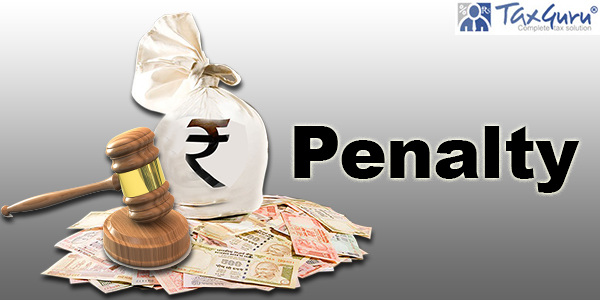

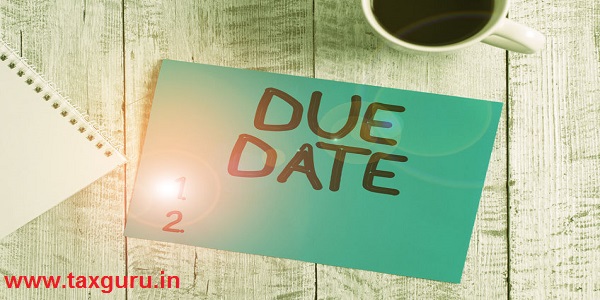




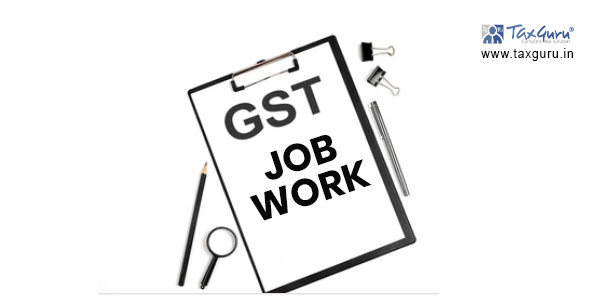

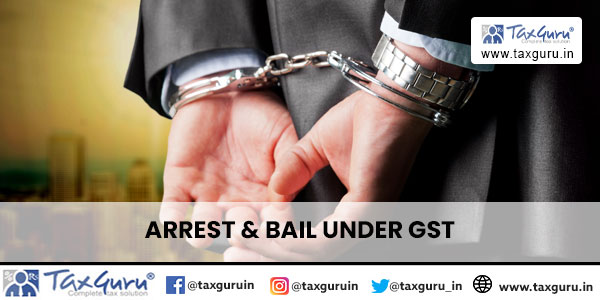
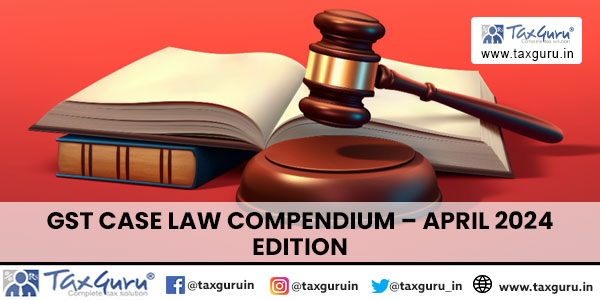

Sir , Your article really knowledgeble ..#GST Tribunals
Your article is elabrately discussed with legally supportive references which have legaly facing problems in GST . Awesome Bro. I expect more articles from you. All the best . Happy New Year.
Your article is elabrately discussed with legally supportive references which have legaly facing problems in GST . Awesome Bro. I expect more articles from you. All the best . Happy New Year.
Thank you for writing this article. I am, or rather was, a businessman, whose business got severely affected by this near sudden implementation of gst. I still haven’t recovered from the losses. I was thinking of migrating to Bangladesh, and starting a life there. But now, I read this article and realize that someone else understands what’s really going on. My eyes have a new shine. Theme of Swades play in my ear. Bangladesh can wait. Thank you, Mr. Parth.